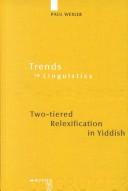| Listing 1 - 4 of 4 |
Sort by
|


ISBN: 2746706334 9782746706330 Year: 2005 Volume: 114
Abstract | Keywords | Export | Availability | Bookmark
 Loading...
Loading...Choose an application
- Reference Manager
- EndNote
- RefWorks (Direct export to RefWorks)
A l'exception d'ouvrages anciens ou non traduits en français et de livres offrant une vision romanesque de ce peuple d'origine turco-mongole, il n'existe quasiment rien en français sur les Khazars. C'est ce vide que souhaitent combler les auteurs de cet ouvrage, sous la direction de Jacques Sapir, spécialiste de la Russie, et Jacques Piatigorsky, passionné de la Russie et d'équitation. Une longue introduction des deux directeurs d'ouvrage permet de cerner les différentes questions et zones d'ombre qui entourent l'histoire des Khazars : bien qu'il existe peu de traces archéologiques des Khazars, quelles extrapolations peut-on effectuer pour définir la manière dont vivaient les Khazars ? Pourquoi se seraient-ils, cas unique dans l'histoire, convertis massivement au judaïsme ? Pourquoi l'historiographie de l'URSS les a-t-elle volontairement oubliés ? Ainsi, le jeune historien russe Alexei Terechtchenko, dresse un état des lieux historiographique de ce qu'il existe sur les Khazars puis, dans un second article, « L'étrange relation de Staline et des Khazars » explique pourquoi l'historiographie soviétique a volontairement omis ce pan de son histoire. Marek Halter et Jacques Piatigorsky s'attaquent quant à eux aux mythes et rêves suscités par les Khazars, notamment chez Arthur Koestler. Enfin, Jean-Louis Gouraud s'intéresse aux Khazars, en tant que peuple cavalier. Un index, une chronologie comparative, un glossaire des peuples et des cartes (notamment une carte inédite faite à partir des découvertes archéologiques les plus récentes qui positionne tous les lieux où ont été trouvés des vestiges khazars) viennent compléter cet ouvrage et replacer les Khazars dans l'histoire mondiale et dans le contexte géographique et géopolitique de l'époque.

ISBN: 9789004160422 9004160426 9786611935986 1281935980 9047421450 9789047421450 Year: 2007 Volume: 17 Publisher: Leiden Boston Brill
Abstract | Keywords | Export | Availability | Bookmark
 Loading...
Loading...Choose an application
- Reference Manager
- EndNote
- RefWorks (Direct export to RefWorks)
This volume, a product of international collaboration, presents readers with the state of the field in Khazar Studies. The Khazar Empire (ca. 650 - circa 965-969), one of the largest states of medieval Eurasia, extended from the Middle Volga lands in the north to the Northern Caucasus and Crimea in the south and from the Ukrainians steppelands to the western borders of Kazakhstan and Uzbekistan in the east. Turkic in origin, it played a key role in the history of the peoples of Rus’, medieval Hungary and the Caucasus. Khazaria became one of the great trans-Eurasian trading terminals connecting the northern forest zones with Byzantium and the Arabian Caliphate. In the ninth century, the Khazars converted to Judaism. This book sheds new light on many unanswered, but fundamental questions regarding the Khazar Empire, so important in medieval Eurasia.
Book
ISBN: 1283165600 9786613165602 3110236060 9783110236064 9781283165600 9783110236057 3110236052 Year: 2011 Publisher: Berlin Boston
Abstract | Keywords | Export | Availability | Bookmark
 Loading...
Loading...Choose an application
- Reference Manager
- EndNote
- RefWorks (Direct export to RefWorks)
Where do East European Jews - about 90 percent of Ashkenazi Jewry - descend from? This book conveys new insights into a century-old controversy. Jits van Straten argues that there is no evidence for the most common assumption that German Jews fled en masse to Eastern Europe to constitute East European Jewry. Dealing with another much debated theory, van Straten points to the fact that there is no way to identify the descendants of the Khazars in the Ashkenazi population. Using a multidisciplinary approach, the author draws heavily on demographic findings which are vital to evaluate the conclusions of modern DNA research. Finally, it is suggested that East European Jews are mainly descendants of Ukrainians and Belarussians. UPDATE: The article "The origin of East European Ashkenazim via a southern route" (Aschkenas 2017; 27(1): 239-270) is intended to clarify the origin of East European Jewry between roughly 300 BCE and 1000 CE. It is a supplement to this book.
Jews --- Ethnicity --- Khazars. --- Akatziroi --- Chazars --- Chozars --- Khazirs --- Khwalisses --- Ethnology --- History. --- Origin. --- Ashkenazi Jewry. --- DNA Research. --- Demography. --- Jewish History.

ISBN: 3110172585 311089873X Year: 2011 Volume: 136 Publisher: Berlin ; Boston : De Gruyter Mouton,
Abstract | Keywords | Export | Availability | Bookmark
 Loading...
Loading...Choose an application
- Reference Manager
- EndNote
- RefWorks (Direct export to RefWorks)
The book claims that Yiddish was created when Judaized Sorbs first relexified their language to High German between the 9th-12th centuries; by the 15th century, the descendants of the Judaized Khazars also relexified their Kiev-Polessian (northern Ukrainian and southern Belarusian) speech to Yiddish and German, Yiddish thus uses a mixed West-East Slavic grammar and suggests that converted Khazars were a major component in the Ashkenazic ethnogenesis.
Yiddish language --- Relexification (Linguistics) --- Ukrainian language --- Khazars --- Yiddish (Langue) --- Relexification (Linguistique) --- Haut-sorabe (Langue) --- Ukrainien (Langue) --- Lexicology, Historical. --- Influence on Yiddish --- Influence sur le Yiddish --- Influence on Yiddish. --- Relexification (Linguistics). --- Upper Sorbian language --- History. --- Dialects --- History --- Lexicologie historique --- Dialectes --- Histoire --- Akatziroi --- Chazars --- Chozars --- Khazirs --- Khwalisses --- Ethnology --- Ruthenian language (Ukrainian) --- Slavic languages, Eastern --- High Sorbian language --- Sorbian languages --- Languages, Mixed --- Lexicology --- German Hebrew --- Hebreo-German language --- Jewish language --- Jiddisch language --- Judaeo-German language (Yiddish) --- Judeo-German language (Yiddish) --- Jews --- Languages
| Listing 1 - 4 of 4 |
Sort by
|

 Search
Search Feedback
Feedback About UniCat
About UniCat  Help
Help News
News